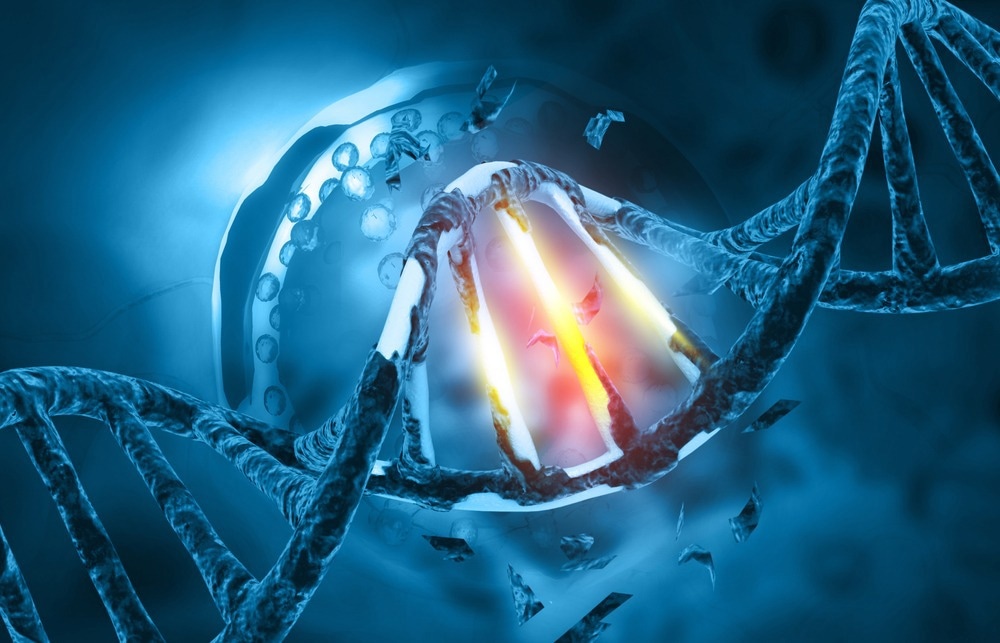In a recent study published in the Journal of Genetic Engineering and Biotechnology, researchers reviewed the consequences of infection with severe acute respiratory syndrome coronaviruses (SARS-CoVs) on the host DNA damage response (DDR).

Background
Viruses utilize host cell machinery for replication due to their small genome size. As such, viruses manipulate several cellular pathways, including DDR. DDR encompasses numerous signaling pathways that protect the integrity of the genome from exogenous and endogenous DNA-damaging agents. Viral proteins could interact directly with DDR pathways affecting the cellular repair capabilities. These interactions lead to genome instability, often associated with viral pathogenesis.
One study found that the import of RNA-binding proteins into the nucleus was reduced during SARS-CoV-2 infection. Viruses also manipulate the cell cycle for their replication, affecting host DNA replication and repair checkpoints. While DDR manipulation by RNA viruses is critical for their pathogenesis, the underlying mechanisms are understudied. In the present review, researchers explored the interactions of SARS-CoV-1 and SARS-CoV-2 with DDR proteins/pathways.
Interactions of SARS-CoV-1 proteins with host proteins
In one study, researchers identified interactions between the non-structural protein (nsp) 13 of SARS-CoV-1 and the host polymerase δ, which plays a crucial role in genome replication. They demonstrated an interaction between the polymerase’s p125 subunit and nsp13. nsp13 forms a part of the viral replication and transcription complex, pivotal for viral replication.
The interaction between these proteins results in S-phase arrest. It has been proposed that polymerase δ-nsp13 interaction could cause partial translocation of the polymerase to the cytoplasm, resulting in the slow generation of the lagging strand, consequently leading to single-strand breaks (SSBs) and, eventually, the cessation of replication.
These events lead to the recruitment of ataxia telangiectasia and Rad3-related (ATR) for stabilizing the arrested replication forks. This mechanism could be applicable for nsp13 of SARS-CoV-2, given the 100% sequence similarity between the nsp13 proteins of the two SARS-CoVs. Moreover, a recent study reported ATR upregulation in SARS-CoV-2-infected Vero E6 cells. SARS-CoV-1 nsp3 was found to interact with the Ring finger and CHY zinc finger domain-containing 1 (RCHY1) protein of humans.
Researchers observed increased RCHY1-mediated degradation of the tumor suppressor p53. The targeted p53 degradation could enhance viral replication since p53 acts as an antiviral factor promoting immune response and downregulating viral replication. Interactions between the viral membrane (M) protein and phosphoinositide-dependent kinase 1 (PDPK1) were discovered, albeit the cellular consequences of this interaction remain unclear.
Interactions between SARS-CoV-2 and host proteins
The SARS-CoV-2 envelope (E) protein interacted with bromodomain proteins (BRDs). BRDs are recruited during the repair of double-strand breaks (DSBs). Besides the interactions between BRDs and E protein, one report showed that the viral spike protein enhanced BRD4 expression, which regulates senescence. Consequently, increased DNA damage and cellular senescence were observed in the infected cells. The senescent phenotype was reversed when cells were treated with a BRD4 inhibitor.
Interactions of the viral ORF8 with the host DNA methyltransferase 1 (DNMT1) were identified. Studies with hepatitis C virus (HCV) uncovered that the virus exploits DNMT1 and DNMT3B for propagation, as the sub-genomic replication of HCV would be inhibited with the downregulation of either methyltransferase. Thus, the authors posit that SARS-CoV-2 ORF8-host DNMT1 interactions could affect the host DNA repair processes. However, more research is required to investigate whether DNMT1 inhibitors impact SARS-CoV-2 pathogenicity.
SARS-CoV-2 nsp1 is key to regulating viral replication and increases infectivity by downregulating the antiviral pathways of the host. It has been demonstrated that nsp1 interacts with all subunits of the DNA polymerase α. Because the polymerase is crucial for DNA replication initiation and non-homologous end joining (NHEJ), the authors suggested that nsp1-polymerase α interactions might cause replication stress and defects in NHEJ.
One study identified interactions between histone deacetylase 2 (HDAC2) and the viral nsp5. It has been predicted that nsp5 processes the cleavage site between HDAC2’s nuclear localization sequence and the catalytic domain. Therefore, it has been proposed that the nsp5-HDAC2 interaction might prevent nuclear localization of the deacetylase and subsequent activation of the interferon response pathway.
Conclusions
Multiple SARS-CoV-2 proteins have been reported to interact with different host proteins related to DDR and could negatively affect their contribution to DNA damage repair. The authors reviewed the interactions of proteins of SARS-CoVs with DDR, proposing some possible effects of DNA repair and genome stability.
Encouraging results were observed with drugs targeting DDR for anti-viral activity. Berzosertib, an ATR kinase inhibitor, exhibits potential anti-SARS-CoV-2 activity in various cell lines, besides inhibiting replication of SARS-CoV-1. Most DDR and SARS-CoV-2 protein interactions were discovered through in silico or high-throughput approaches. Therefore, future studies should experimentally validate the potential use of these DDR proteins as drug targets.
- Mekawy, A. et al. (2022) "The consequences of viral infection on host DNA damage response: a focus on SARS-CoVs", Journal of Genetic Engineering and Biotechnology, 20(1). doi: 10.1186/s43141-022-00388-3. https://jgeb.springeropen.com/articles/10.1186/s43141-022-00388-3
Posted in: Medical Science News | Medical Research News | Disease/Infection News
Tags: Ataxia, Biotechnology, Cell, Cell Cycle, Cytoplasm, DNA, DNA Damage, DNA Polymerase, DNA Replication, DNMT1, DNMT3B, Drugs, Genetic, Genetic Engineering, Genome, Genomic, Hepatitis, Hepatitis C, Homologous, Immune Response, Interferon, Kinase, Kinase Inhibitor, Membrane, Phenotype, Polymerase, Propagation, Protein, Research, Respiratory, RNA, SARS, SARS-CoV-2, Severe Acute Respiratory, Severe Acute Respiratory Syndrome, Spike Protein, Stress, Structural Protein, Syndrome, Transcription, Tumor, Virus, Zinc

Written by
Tarun Sai Lomte
Tarun is a writer based in Hyderabad, India. He has a Master’s degree in Biotechnology from the University of Hyderabad and is enthusiastic about scientific research. He enjoys reading research papers and literature reviews and is passionate about writing.
Source: Read Full Article